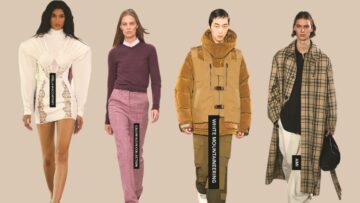The latest US tariff rises on imports from China, Canada, and Mexico have been described by the UK Fashion & Textile Association (UKFT), which also stated that other changes, such as the broader repeal of the “de minimis” rule, are anticipated.
In order to impose further taxes on goods manufactured in China, Canada, and Mexico with immediate effect, US President Donald Trump signed a variety of executive measures. From the initial 10 per cent imposed in February, the additional duty on all Chinese goods has increased to 20 per cent.
Due to the removal of the “de minimis” exemption, which permits duty-free imports under US $ 800, all Chinese goods are now subject to an additional 20 per cent levy. The US regular duty rates are in addition to the additional 20 per cent tariff. Previously subject to a 17.5 per cent levy, Chinese-made goods are now subject to a 37.5 per cent tax. In the meanwhile, products manufactured in Canada and Mexico are subject to a 25 per cent duty.
According to Paul Alger, director of international business at UKFT, the US has previously used higher tariffs to achieve its policy goals. Many have been caught off guard by the pace of these changes, but it’s crucial to maintain composure, be knowledgeable, and, whenever feasible, adopt a long-term perspective.
Additional tariffs are likely to hurt consumers the most, but brands can preserve their market position by agreeing to cover a portion of the higher expenses in the short term in the hopes that things will return to normal in the future. An increase in US visitors coming outside to shop for deals could also be observed, ideally in the UK, as the US currently has higher duty rates for fashion than most other countries, and it is undoubtedly greater than the UK and EU external tariffs, he added.







